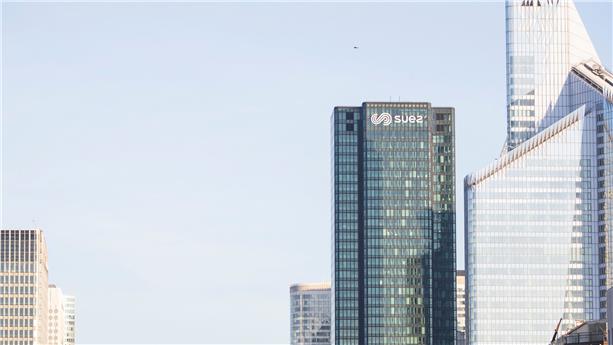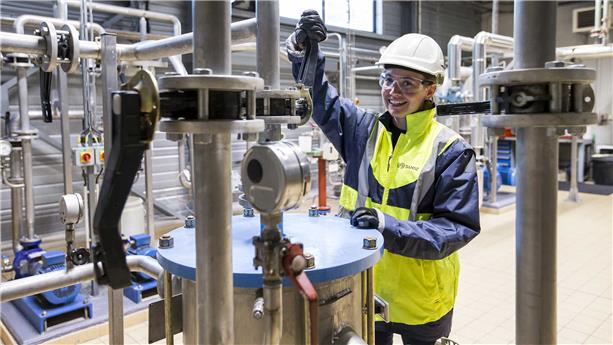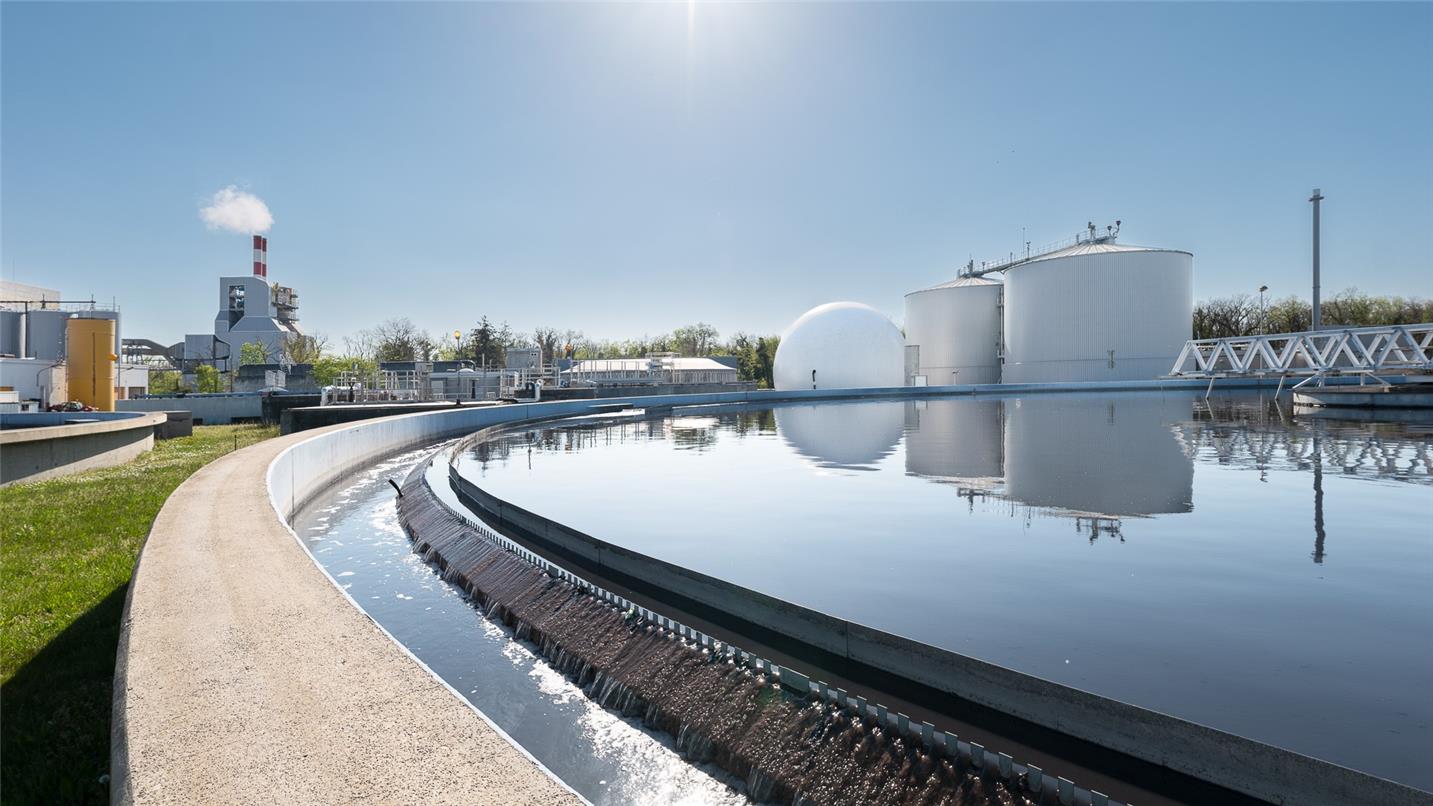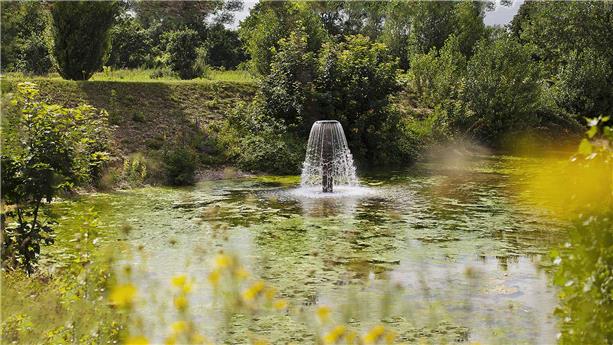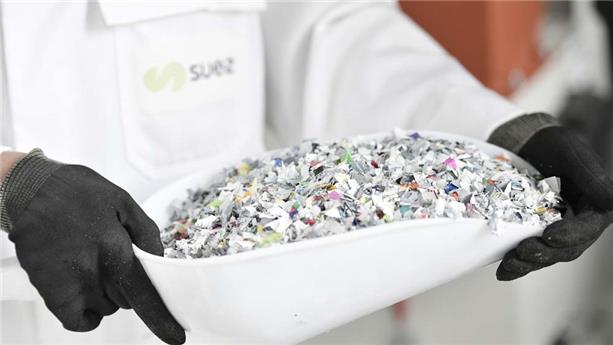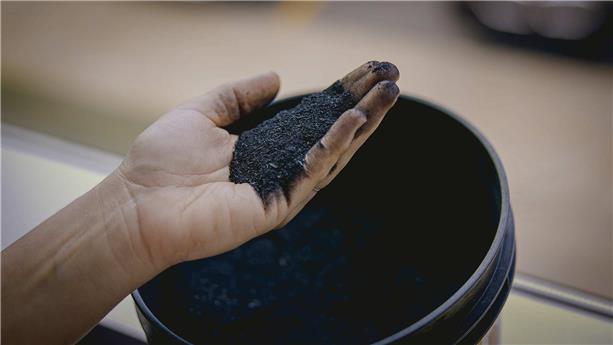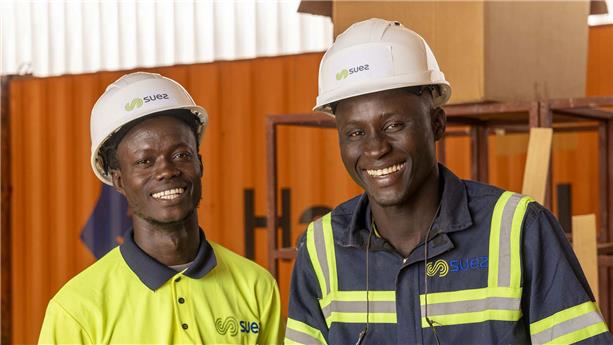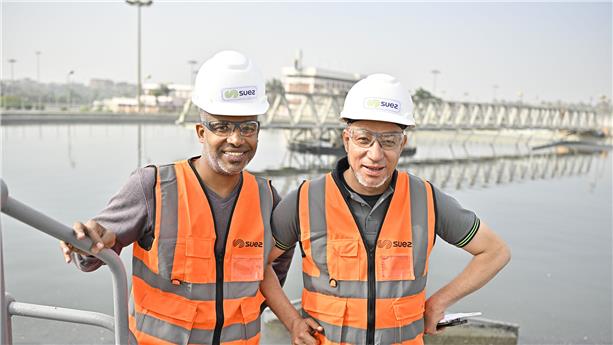
The group wants to go even further by turning its water and waste treatment plants into high value-added infrastructures in order to maximise performance and limit the impact on the environment. its teams are developing solutions to make sites more compact, optimise energy consumption, and anticipate and prevent the risk of wear and tear and breakdowns, in order to make facilities more resilient and protect the environment.
At the same time, SUEZ is investing in transforming its purification plants into biofactories that produce more energy than they consume, which is used to supply the local region.
60% of the Earth’s biodiversity is found in the soil, which is essential to life, providing habitat for plant and animal species, water infiltration and carbon capture. However, soil can be irreversibly altered when it becomes artificial.
In France, between 20,000 and 30,000 hectares of natural, agricultural or forest land are taken over each year1. This phenomenon is growing at four times the rate of population growth.
To protect ecosystems and biodiversity, the French Climate and Resilience Law (2021) is designed to halve the rate of land artificialisation by 2030 compared with 2011-2020, and to achieve a balance between artificial land and regenerated/ renaturalised soil by 2050, with a target of “net zero artificialisation”. The Group’s 2023-2027 Sustainable Development Roadmap is aligned with these various regulations, making commitments to reduce pressure on biodiversity by helping to lower the rate of land artificialisation.
Our innovation in action
The Group’s teams are developing solutions to help make facilities more compact. For example, Carbazur Up, the technology used to treat micropollutants and organic materials, benefits from a 50% smaller footprint compared with similar solutions. This compact and efficient technology allows for micropollutant treatment in excess of current requirements, as well as neutralisation of tastes and smells.
- 50%
“Compactness is not just a necessity; it’s a responsibility. We firmly believe that every square metre counts when it comes to protecting our environment. By developing technologies such as Carbazur Up, we are showing that it is possible to reduce our footprint while maintaining optimum performance. This is our commitment towards achieving a more sustainability future.”
Eric Judenne, Marketing & Sustainability Director, SUEZ Engineering & Construction
—
Water treatment and purification plants comprise hundreds or even thousands of pieces of equipment that require daily maintenance, such as pumps, valves, instrumentation and pipework. In order to work well, these plants therefore depend on this equipment being kept in good condition to ensure a reliable and lasting water supply and wastewater treatment.
Our innovation in action
In 2020, SUEZ launched a “Shared Reality” solution in partnership with SAMP at a number of drinking water and purification plants operated by the Group, such as the Rosny-sur-Seine wastewater treatment plant owned by the Communauté Urbaine Grand Paris Seine & Oise (CU GPS&O). This solution, developed by French deeptech company SAMP, is used to create digital twins of facilities on the basis of sites’ technical data (inventories, plans, schematics, etc.) and using 3D scanning. By using this digital solution in combination with AI, operations teams have access to reliable and contextualised data and are able to work virtually on plants prior to any intervention the ground.
This digitalised environment allows for improved working conditions and site safety, and provides the opportunity to devise optimised maintenance and replacement plans. It also helps to reduce the risk of errors and breakdowns in the day-to-day management of water and sanitation services, thereby helping to preserve our natural heritage and natural environments.
“Our 'Shared Reality' solution means that plants can make the shift towards more sustainable production in more reliably and more quickly. This collaboration with SUEZ confirms are shared vision regarding the fundamental need for disruptive technologies to respond to the huge challenges facing industry in terms of safety, resilience and the environment.”
Laurent Bourgouin, CEO of SAMP
—
Built to treat domestic and industrial wastewater, the primary purpose of conventional purification plants was to decontaminate the water supply in order to limit the impact of discharges into the natural environment.
Efforts to make management of purification systems more efficient and sustainable have changed how wastewater is perceived. Sewage sludge has gone from waste to be disposed to sources of materials to be reused in the form of energy and minerals. To this end, the role of treatment plants has expanded, from decontaminating wastewater to cogeneration of renewable materials to be reincorporated into production cycles by means of recovery of wastewater treated using the REUT (reuse of treated wastewater) process.
Our innovation in action
SUEZ designs and develops new generation wastewater treatment plants or “biofactories”, which constitute real resources for the local regions in which they are located.
7
- A source of local and renewable energy: By recovering wastewater and unavoidable energy from processes, these energy-positive plants generate more energy than they use to operate. The biogas produced can be turned into electricity, heat or fuel for urban heating networks and surrounding industries.
- Source of minerals (phosphorous, nitrogen) that can be turned into agricultural fertilisers.
- Source of residual water, from treated wastewater, which can be reused for irrigation, in manufacturing processes, maintenance of roads and green spaces or even groundwater replenishment.
- Source of cost cuts thanks to reduced use of chemicals.
Laying the first stone of the new Haliotis 2 treatment plant in Nice. This new generation plant is the culmination of the ambitions of the Nice Côte d’Azur city authority and the Régie Eau Azur water board, coupled with SUEZ’s technological expertise to make treatment and recovery of the city’s wastewater (26 communes, equivalent of 680,000 residents) a driving force in the region’s ecological transformation.
Due to become operational in 2030, this future “all-in-one” plant, which incorporates all of SUEZ’s latest technologies in water purification, energy recovery and environmental protection, will be a benchmark in Europe for water treatment plants.
Decontamination and reuse of wastewater, an acute issue in this mediterranean region:
- A biological reactor allows for two procedures to be carried out simultaneously: filtration and intensive biological treatment. Biolite is a natural mineral support for the microorganisms used for purification that does not release any artificial residues into the natural environment at the end of the chain. This means that 90% of microplastics found in sewage sludge can be eliminated.
- A REUT industrial unit is to be installed at the site, which will allow for 5 million m3 of water to be recycled each year, providing 100% of the water needed by the city of Nice for watering green spaces and road cleaning.
Four times more energy than is used by the current plant, with 15,000 tonnes of CO2 avoided each year:
- Recovery of sewage sludge will allow for the production of 43 GWh of biomethane per year, equivalent to the energy used by 11,000 homes or 290 buses.
- Incineration of this waste in energy recovery units will contribute 26 GWh a year of energy to be fed back into the Ariane heating network.
- Residual heat from wastewater will also be recovered to supply Nice-Côte d’Azur airport’s heating network and the Grand Arenas business district, providing 27 GWh per year.
- Installing solar panels will produce 475 MWh of electricity per year and contribute to making the building energy autonomous.
4 times +
of the Promenade des Anglais.
—
“Protecting waste resources is one of the major challenges of this century, particularly in this region. It is our duty to do all we can to save water. This future complex – a first in France – will enable us to address the challenges of the next few decades and put our city one step ahead. It will make a significant contribution to achieving the target set out in our Climate Plan of reducing our greenhouse gas emissions by 55% by 2030 and becoming carbon neutral in 2050.”
Christian Estrosi, President of the Nice Côte d'Azur Metropolitan Authority
—
